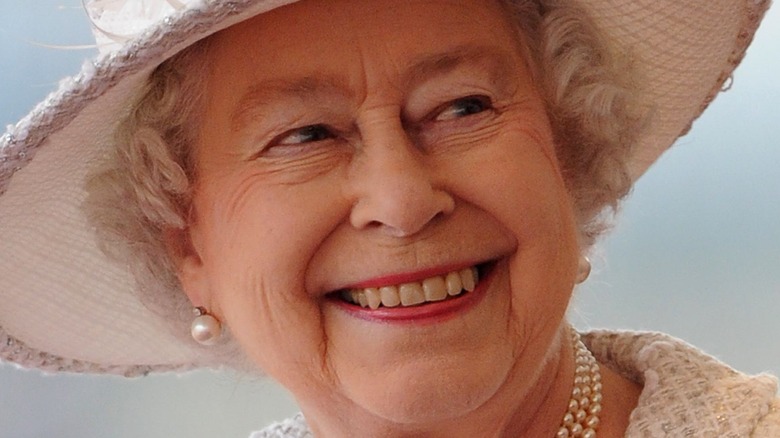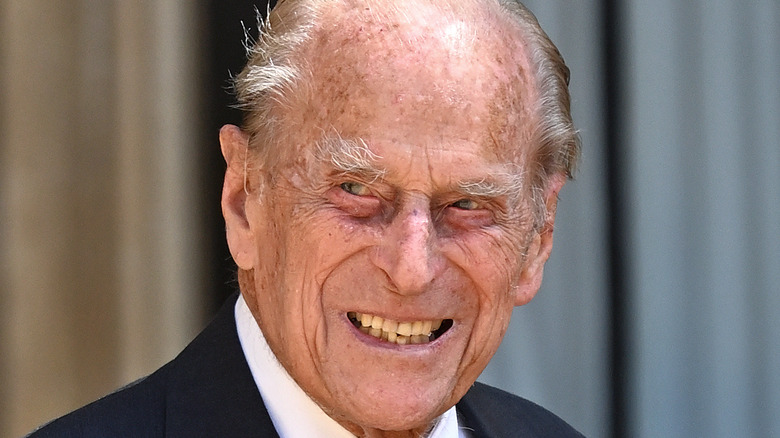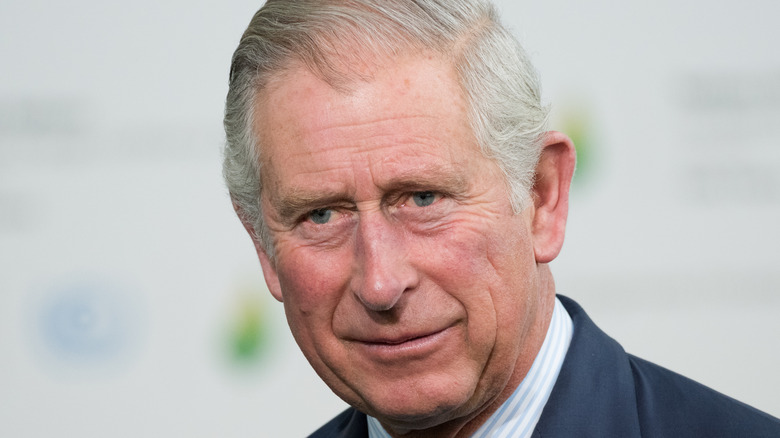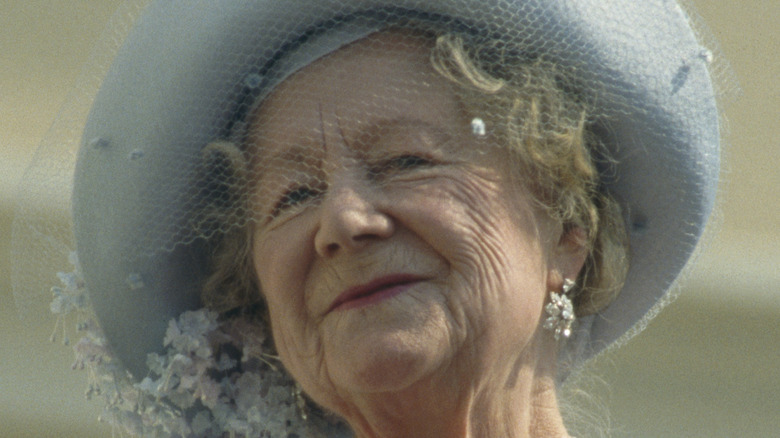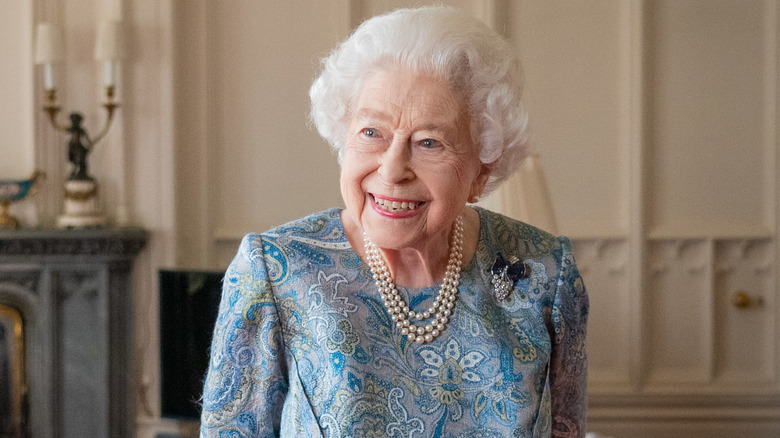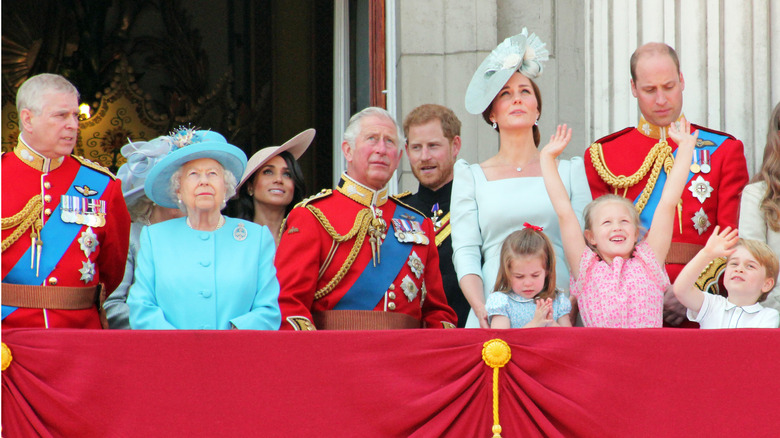The Royal Family's Code Names Explained
So does anyone remember that Gerard Butler movie, "Olympus Has Fallen"? How about the cross-Atlantic sequel, "London Has Fallen"? No, it wasn't a live-action version of that kids' song about the bridge with the creepy "ashes, ashes, we all fall down" line. Well, what if we told you that there are far less explosives-laden, but far more real-life, versions of that type of code name used in official governmental circles in the United Kingdom? "London Bridge is down" is one such phrase, but it's actually not talking about a bridge. It's talking about Queen Elizabeth II.
As Cosmopolitan explains, there's a contingency plan in place in case the queen dies, and has been since the 1960s. There are such plans for all senior members of the royal family, each given a different, typically bridge-based code name, for some reason. There are even funereal "dress rehearsals" conducted on an annual basis to make sure everyone knows what to do. We're assuming this includes hundreds of house staff, security personnel, office workers, and the rest across multiple properties and locations.
The reasoning for this kind of preparation is pretty sound: to give the appearance of order and stateliness amid potential chaos and public outcry. To aid in the upkeep of such order, each royal also has an "I'm out and about, so you'd better keep tabs on me" code name used by security. And as an aside: No one, as far as we know, is "007."
Operation Forth Bridge
The fact is, code names can be amusing. It's just too easy to envision guards stationed around the U.K. speaking into hi-tech wrist watches and muttering, "The Marmite has hardened!" But to be honest, it really does seem like this is what's supposed to go down if one of the members of the royal family dies.
The key, general feature of all the royal's code names and death plans is secrecy and silence, as the Bristol Post explains. The public is not to know about the death in question until plans have been set into motion. (Of course, articles like this containing supposedly secret information might blow the whole thing.)
It's all right, though, because both the public and everyone involved in the royals' secret procedures have had some recent funereal experience. When Prince Philip died in 2021, it became common knowledge exactly how involved he was in planning his own funeral. Those plans, kicked off by the code name "Operation Forth Bridge" — named after a railway bridge near Edinburgh, Scotland — involved a Land Rover conveying his body in honor of his military service, a 100% biodegradable coffin composed of domestic wool (both via The U.S. Sun), and an overall "no fuss" attitude that greatly resembled Prince Philip himself (via AP News).
Operation Menai Bridge
Another prominent royal family member with a code name and death plans is Prince Charles. Fans of the Netflix series "The Crown" might already be familiar with the phrase used to discuss his death: "Operation Menai Bridge," named after a bridge in Wales (Prince Charles being the Prince of Wales). Season 4, episode 9 of the show features a real-life event that Charles experienced in 1988, as Town & Country Magazine describes.
Back then, Charles, Princess Diana, and Sarah Ferguson, Duchess of York were on a skiing trip in Klosters, Switzerland, when an avalanche started on Mt. Gotschnagrat. Some 300 feet below the tumbling snow skied six people, including Prince Charles. Diana and Sarah Ferguson weren't on the slopes at the time, but some of their mutual friends were, including Major Hugh Lindsay, who died, and Patricia Palmer-Tomkinson, who suffered injuries to her legs and lungs, as iNews reports. At the time, Charles was presumed dead, and the code name "Operation Menai Bridge" was invoked.
If Prince Charles had died, it would have been much earlier than expected, because as Bristol Post says, plans for his funeral still aren't finalized. Until then, though, Charles can go by his three living code names, one of which is "Unicorn" (via Cosmopolitan). The code for his potential coronation as king in the event of Queen Elizabeth's death? The rather grandiose "Operation Golden Orb." And Princess Diana? Her living code name was "Noah."
Operations Tay Bridge and Hyde Park Corner
Of course, royal death plans and code names aren't new things. Imagine being a common person back in the day — say, the 11th century roundabout the time of the Norman Conquest of England — when the death of a monarch meant the potential havoc of a struggle for power between nobles. Let's be grateful that the death of a modern monarch no longer plunges a nation (at least England) into a chaotic and bloodied frenzy.
To whit: Queen Elizabeth II's mother, The Queen Mother, had a code phrase for her death plans. And yes, it's another bridge: "Operation Tay Bridge," named after a bridge in Scotland. There may be some slightly more creative symbolism at work with this name, though, because the Tay Bridge collapsed in 1879, and is still regarded as "one of the worst structural engineering failures in the British Isles," as Tay Bridge Disaster puts it. We can assume, at least, that the Tay Bridge was chosen because The Queen Mother grew up in Scotland; bagpipes featured prominently at her 2002 funeral, as Bagpipe Journey recounts.
The Queen Mother's husband, King George VI, who reigned during World War II, broke the bridge trend. The code name for his death was "Operation Hyde Park Corner," the name of a tube (subway) station at — you guessed it — the corner of Hyde Park in London.
Operation London Bridge
When Queen Elizabeth II dies, it will be quite a world event. The queen took the throne in 1952, and as of this writing is the second-longest-reigning monarch in history (via NPR). She celebrated her Platinum Jubilee in 2022, as the Royal Family's website recounts in detail. Queen Elizabeth has experienced some ups and downs in health throughout her life, and has cut back on her duties as she's gotten older, as CNN describes. Naturally, media have been all over any and every one of her health scares.
There's no need to fear as far as her funeral plans are concerned, though. "Operation London Bridge" has been under construction since the 1960s, as Cosmopolitan says. While we don't know any details about the proceedings, we're pretty sure that, like other royals' ceremonies, it will feature what Queen Elizabeth cares about, or is relevant to her life. The words "London Bridge is down" will signify to those involved to kick things off. It stands to reason that the choice of London's self-named monument, London Bridge, may signify precisely how important some regard the queen to be to the heart of the nation.
As far as on-the-town nicknames are concerned, security personnel refer to Queen Elizabeth II by the unusually low-key and unremarkable moniker "Sharon," for some reason. As Cosmopolitan says, sometimes they even shrink Sharon to a simple "S."
Some code names are remarkably mundane
Let's have a look at Prince Charles and Princess Diana's sons and their partners. As a general rule, it seems like only senior royals get funereal code names, bridge-based or otherwise, while everyone else has to live with mere on-the-go nicknames of a very particular and odd variety.
Along those lines, Prince William and Kate Middleton, the Duke and Duchess of Cambridge, don't have any "Operation Whatever" phrases meant to be deployed on death (via Cosmopolitan). Their around-the-town nicknames, though, come across as odd even when compared to the queen's "Sharon." Both of their code names have first and last names with the initials DC: Danny Collins and Daphne Clarke, for the Duke and Duchess of Cambridge, respectively. While we could speculate that a deep love of DC comics like Superman and Batman led to the choice, we admit it's sadly not too likely. And at risk of sounding morbid or tasteless, it doesn't seem as though any of Prince William and Kate Middleton's three children have funereal phrases or on-the-go nicknames.
Prince Harry and Meghan Markle apparently don't, or didn't, have code names for their funerals, either before or after they stepped back as "working royals" in 2020 (per Metro). And yet once again, before their departure, they too had code names: David Stevens and Davina Scott, for the Duke and Duchess of Sussex.
